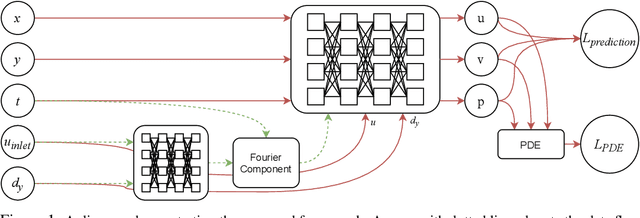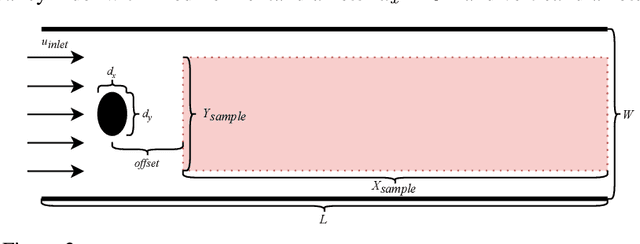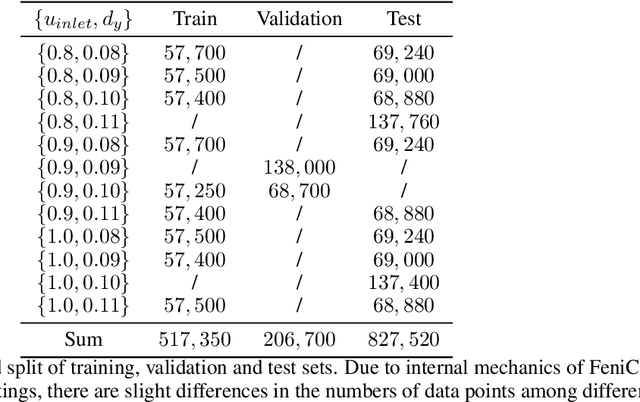Arindam Dasgupta
Frequency-compensated PINNs for Fluid-dynamic Design Problems
Nov 03, 2020



Abstract:Incompressible fluid flow around a cylinder is one of the classical problems in fluid-dynamics with strong relevance with many real-world engineering problems, for example, design of offshore structures or design of a pin-fin heat exchanger. Thus learning a high-accuracy surrogate for this problem can demonstrate the efficacy of a novel machine learning approach. In this work, we propose a physics-informed neural network (PINN) architecture for learning the relationship between simulation output and the underlying geometry and boundary conditions. In addition to using a physics-based regularization term, the proposed approach also exploits the underlying physics to learn a set of Fourier features, i.e. frequency and phase offset parameters, and then use them for predicting flow velocity and pressure over the spatio-temporal domain. We demonstrate this approach by predicting simulation results over out of range time interval and for novel design conditions. Our results show that incorporation of Fourier features improves the generalization performance over both temporal domain and design space.
A Conditional Generative Model for Predicting Material Microstructures from Processing Methods
Oct 04, 2019


Abstract:Microstructures of a material form the bridge linking processing conditions - which can be controlled, to the material property - which is the primary interest in engineering applications. Thus a critical task in material design is establishing the processing-structure relationship, which requires domain expertise and techniques that can model the high-dimensional material microstructure. This work proposes a deep learning based approach that models the processing-structure relationship as a conditional image synthesis problem. In particular, we develop an auxiliary classifier Wasserstein GAN with gradient penalty (ACWGAN-GP) to synthesize microstructures under a given processing condition. This approach is free of feature engineering, requires modest domain knowledge and is applicable to a wide range of material systems. We demonstrate this approach using the ultra high carbon steel (UHCS) database, where each microstructure is annotated with a label describing the cooling method it was subjected to. Our results show that ACWGAN-GP can synthesize high-quality multiphase microstructures for a given cooling method.
 Add to Chrome
Add to Chrome Add to Firefox
Add to Firefox Add to Edge
Add to Edge